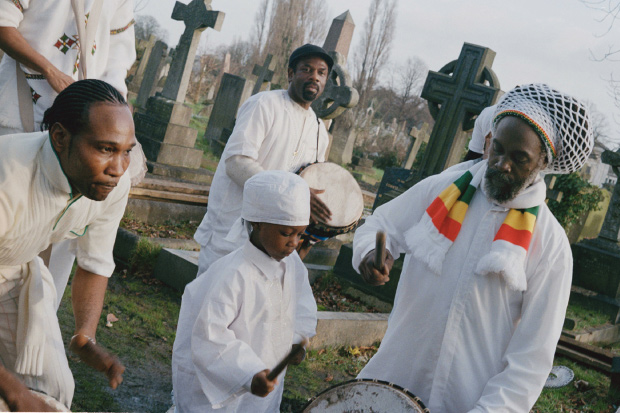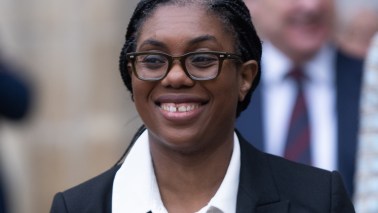Death is big business in parts of the Caribbean. In the Jamaican capital of Kingston, funeral homes with their plastic white Doric columns and gold-encrusted ‘caskets’ are like a poor man’s dream of heaven. The dwindling belief in an afterlife — the consolation that we might ever join our loved ones — has taken much of the old-time religion out of the West Indian funeral. Wealthier Jamaicans may lavish up to US $30,000 on a Cadillac hearse. Now even death wears bling.
Fortunately, mortuary tradition survives in the Neo-African ‘Nine Night’ ceremony, where for nine nights the body remains in the deceased person’s home or ‘dead yard’ and hymn-singing mourners see to its safe departure to the next world. Charlie Phillips, a Jamaican-born photographer, has spent over half a century shooting Nine Night and other African Caribbean rites in his adopted London. How Great Thou Art, a socially important document, reveals the British West Indian experience of death in all its pathos, occasional comedy and life-affirming sense of the funeral as essentially a fun-for-all. As these photographs show, a person is not considered to be fully dead until his or her spirit (duppy) has been appeased through offerings of drink, food, dance and song, and successful entombment taken place. As they say in Jamaica: ‘No call a man dead til you bury him.’
In Phillips’s moving and often beautiful images, dating from 1962 to the present, the bereaved are seen to face the mystery of the end of life in stush black suits, spidery hat veils, Rastafari head-ties, spiffy trilbies and strictly-come-dancehall white socks. From Brixton to Kensal Rise, Tooting and beyond, death is celebrated as a release from earthly cares as well as an occasion for social display.








Comments
Join the debate for just £1 a month
Be part of the conversation with other Spectator readers by getting your first three months for £3.
UNLOCK ACCESS Just £1 a monthAlready a subscriber? Log in